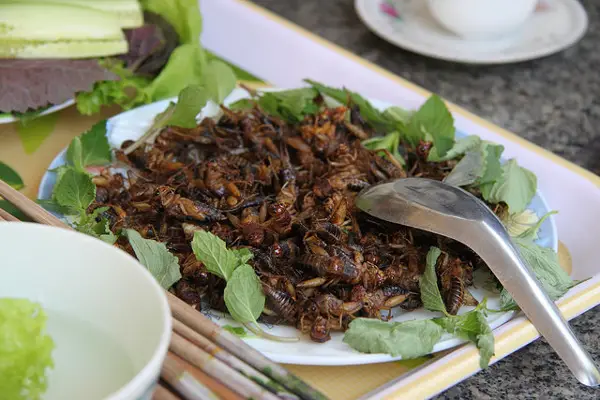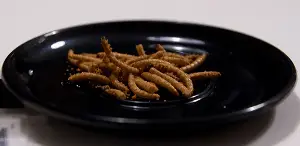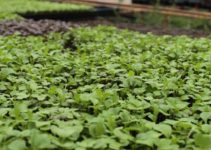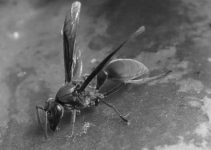Have you ever thought of eating little, crunchy, yummy insects such as grasshoppers and cockroaches? What will be your response when someone asks you to have ‘cricketty-cricketty crickets’ or ‘buzzerry-buzzery buggies’ dinner? Hmm… Quite weird huh! But, if it becomes a solution for the world hunger after 50 years, what will your response be? Oh well, let us see what’s so good about insects and why it is considered as that.
Consumption of edible insects has been part of human history for many cultures. These insects played an important role as part of human nutrition in many regions worldwide like Africa, Latin America and Asia. Rural areas in these regions suffer from malnutrition, especially protein-energy malnutrition (PEM) (Siriamornpun and Thammapat, 2008).
Communities of Thailand for instance, have a long cultural history of eating insects. They have become well-known for their exotic food like cockroaches, beetles, grasshoppers and other insects; it is one of the countries which have the most registered species that make their way into man’s digestive system.

Over decades, edible insects are used for other products like canned goods or snacks on a commercial-scale. Its use as a sustainable and secure source for human diet has continued to increase (FAO, 2010; Shockley and Dossey, 2014).
Survival Strategy of Edible Insects
The unpredictable changes in the environment causes many organisms to develop adaptation strategies to survive. One of the strategies is to increase in number of offspring that need little energy investment. The underlying reason is that even if there are unpredictable forces of nature, still there will be some left to live, to reproduce, age and pass on future generation just by mere numbers. Many invertebrates follow this strategy – lots of eggs are produced and larvae are formed but only a few survive to maturity (FAO, 2013; Shockley and Dossey, 2014).
Insects place an emphasis on high growth rate which typically exploit less-crowded ecological niches and produce many offspring quickly. The exponential growth curve by Malthus applies in this selection where the population at the beginning is not very high but grows independently at a very fast rate. Nonetheless, these organisms have relatively low chance of surviving to adult stage. Creatures belong under this strategy are called r-strategists (Shockley and Dossey, 2014).
Most of the organisms classified as r-strategists are pests. They damage crops or bother human beings. However, the traditional use of insects as food continues to expand around the world and it gives significant socio-economic and environmental values for the communities (FAO, 2010).
Potential Source of Alternative Food – Solution to World Hunger
It was projected that by 2050, the world will be having 9 billion people. To support the food needs of this number, the present food production will need to almost double. Arable land, however, has become scarce due to rapid development. Oceans are over fished and climate change and other related shortages can have direct or indirect implications to food production. To meet these problems, production and consumption should be re-evaluated. New strategies of producing food are needed (FAO, 2013).

There has been a growing realization that insects can meet the scarcity in food especially in the many protein challenged regions. The works of Raksakantong et al. (2010) as stated by Siriamornpun and Thammapat (2008) concluded that one of the cheapest sources of animal protein are insects.
Consumption of insects is continuously encouraged by many people due to financial issues. Many of the poorest populations in the world such as Africa and Asia eat insects as part of their diet (Shockley and Dossey, 2014). It has the potential of supporting many rural dwellers including also those street traders in urban areas, where some of these insects are popular among those who want to try alternative food (FAO, 2013; West Africa Trends Team, 2014).
The efficiency and biodiversity benefits provided by insects are potential for food supplies and sustainability of a region. Insects contain higher nutritional quality than animal protein as well as produced more sustainable and with much smaller ecological footprint than most livestock such as pigs and cows (FAO, 2013; Shockley and Dossey, 2014).
Furthermore, since insects are r-strategists, they tend to produce quickly compared to livestock, thus, have greater efficiency and biodiversity for they can contribute to human food ingredients even within a short period. There are more than 1 million species of edible insects described and still more than 4-30 million species are estimated to exist on earth, living in every niche inhabited by humans and beyond. For instance, house crickets can lay 1,200 – 1,500 eggs in just a matter of 3-4 weeks (Shockley and Dossey, 2014).
Gathering and farming of insects can also offer employment and more source of income. In developing countries like in Asia, demand for edible insects becomes common. It is relatively easy to bring insects to market. Gathering, rearing and processing into street foods, just like the sale of chicken or fish, are within the reach of small-scale enterprises (FAO, 2013).
Finally, the combined force of traditional knowledge and new technologies in gathering, rearing, processing or producing edible insects is a potential solution for world hunger problems.
Yummy, crunchy cockroach meal, anyone?
References:
Food and Agriculture Organization of the United Nations (FAO) (2010). Edible forest insect: humans bite back! Rome, Italy: Publishing Policy and Support Branch.
Food and Agriculture Organization of the United Nations (FAO) (2013). Edible insects: future prospects for food and feed security. Rome, Italy: Publishing Policy and Support Branch.
Shockley M. and A. T. Dossey (2014). Insects for Human Consumption. In Mass Production of Beneficial Organisms Invertebrates and Entomopathogens. J. A. Morales-Ramos, M. G. Rojas and D. I. Shapiro-Ilan (Eds.). Chapter 18. Pp/ 617-652.
Siriamornpun, S. and P. Thammapat (2008). Insects as a Delicacy and a Nutritious Food in Thailand. Thailand: International Union of Food Science and Technology. p. 1-9.
West Africa Trends Team (2014). Bushmeat and the future of protein in West Africa. West Africa Trends Newsletter, Issue 9. African Center for Economic Transformation. p. 8-13.
©2014 November 27 Shellemai A. Roa




Thanks for sharing this Great article